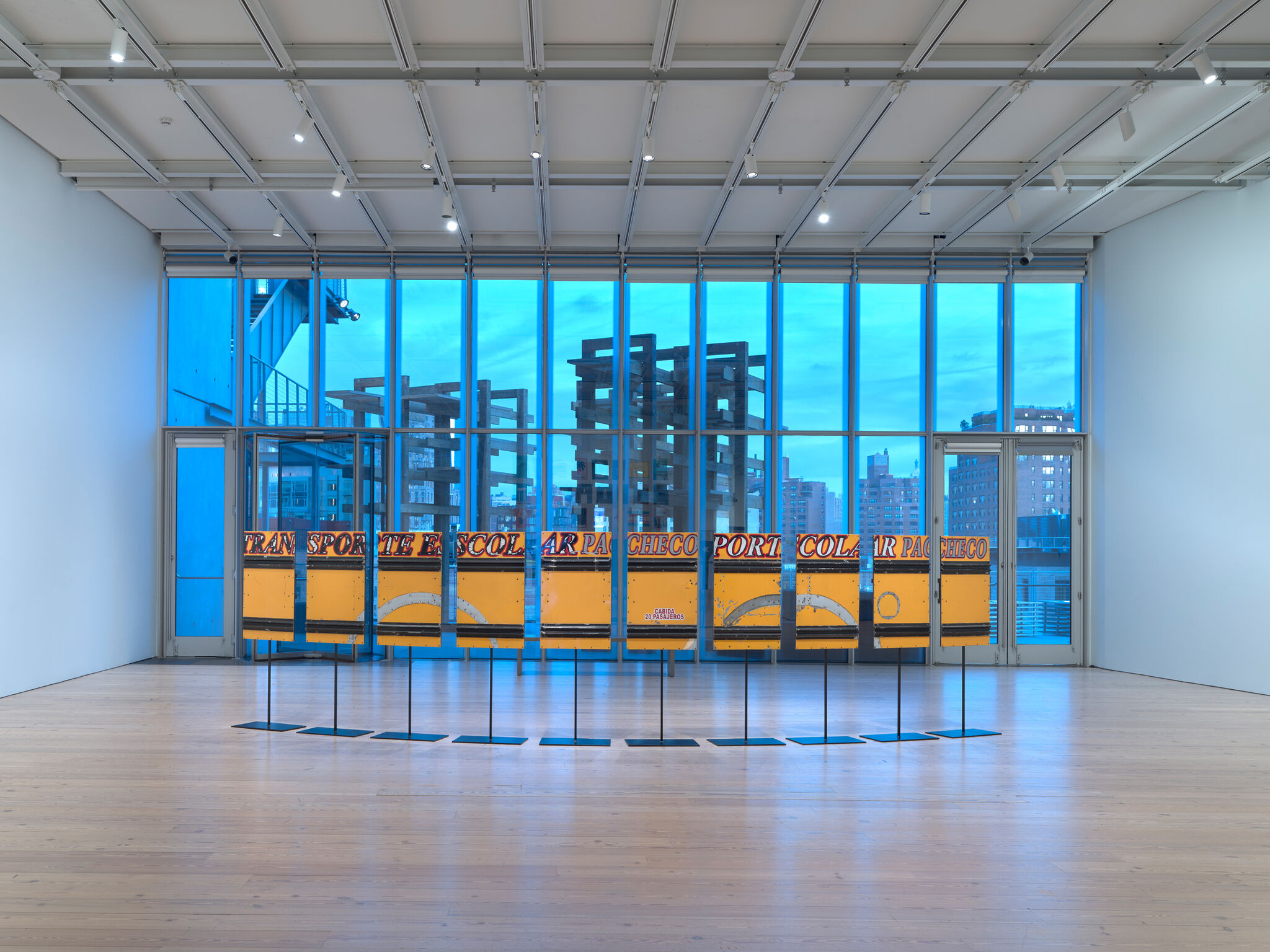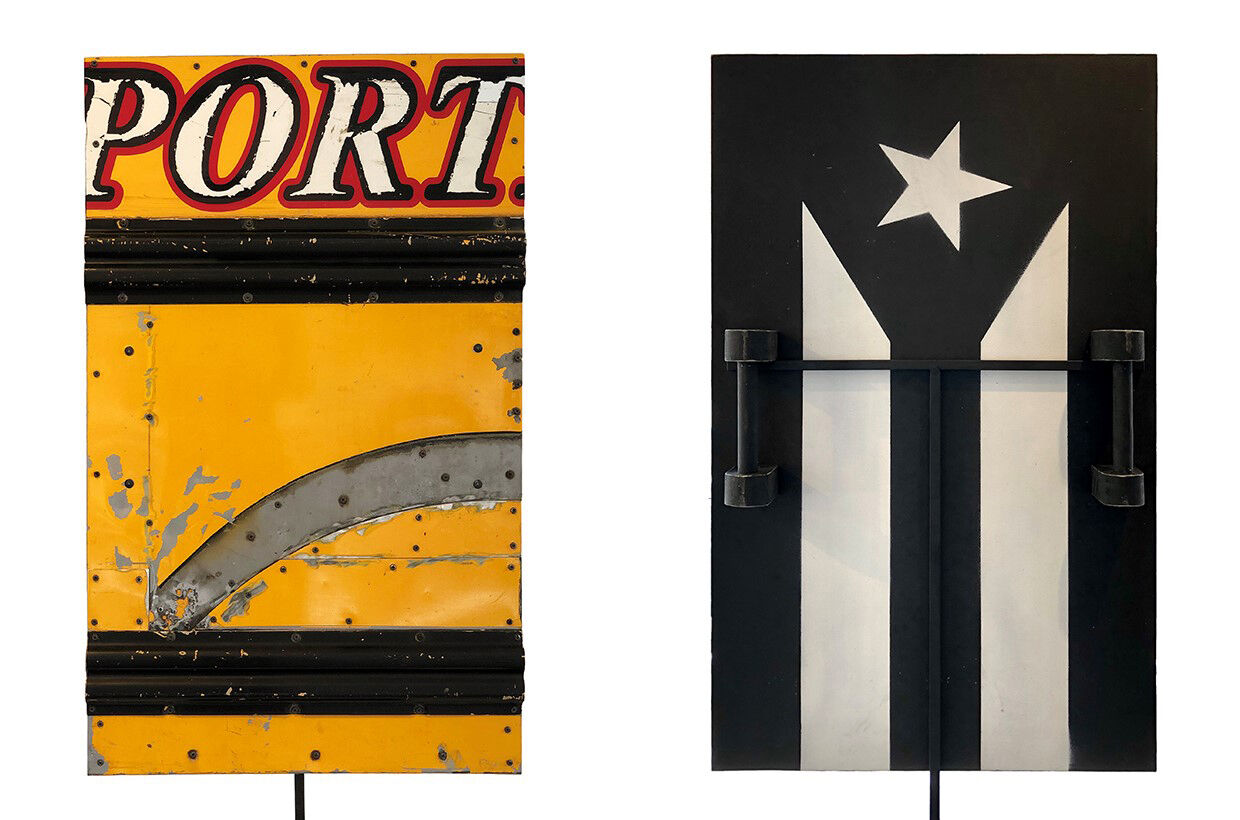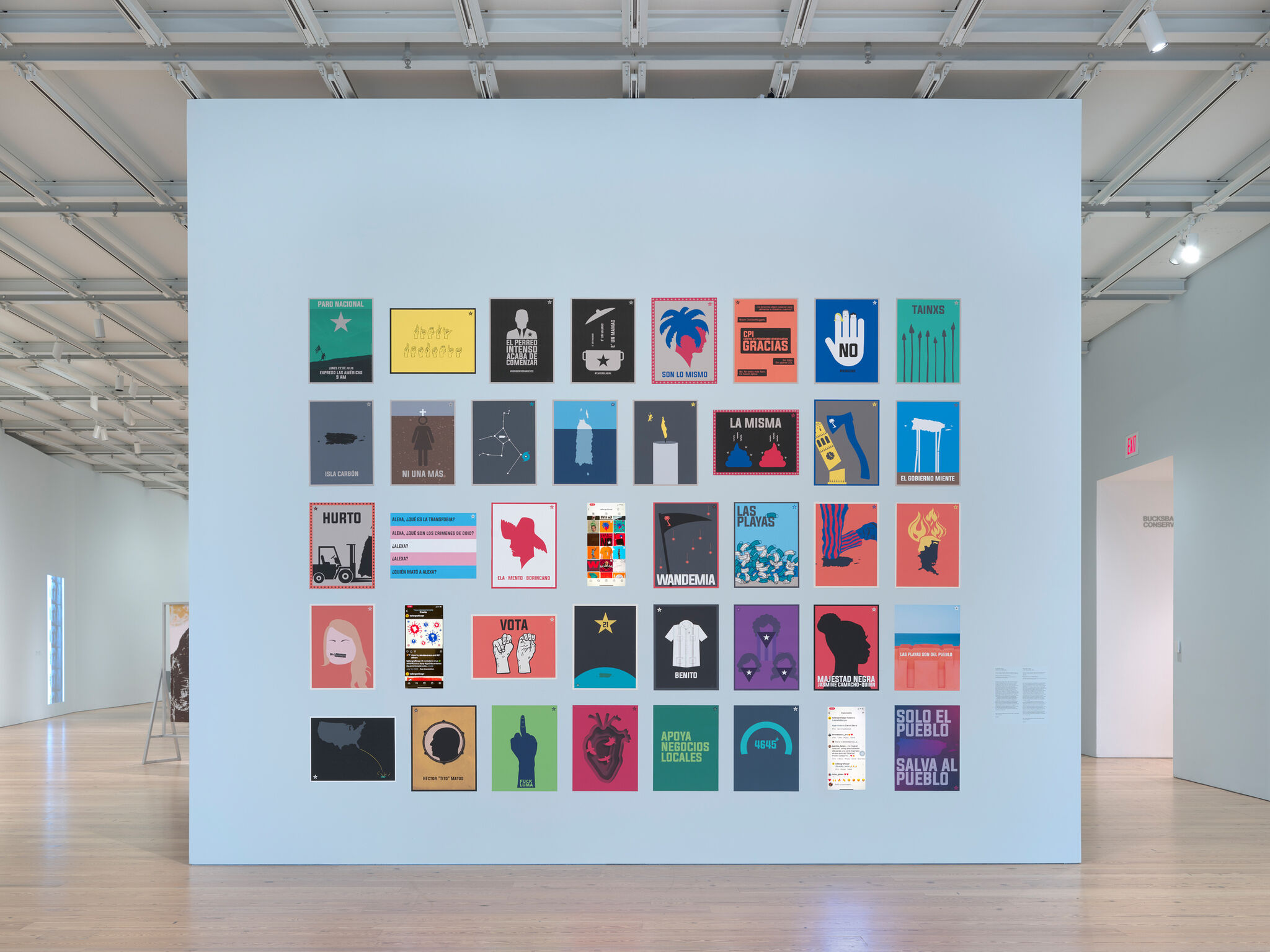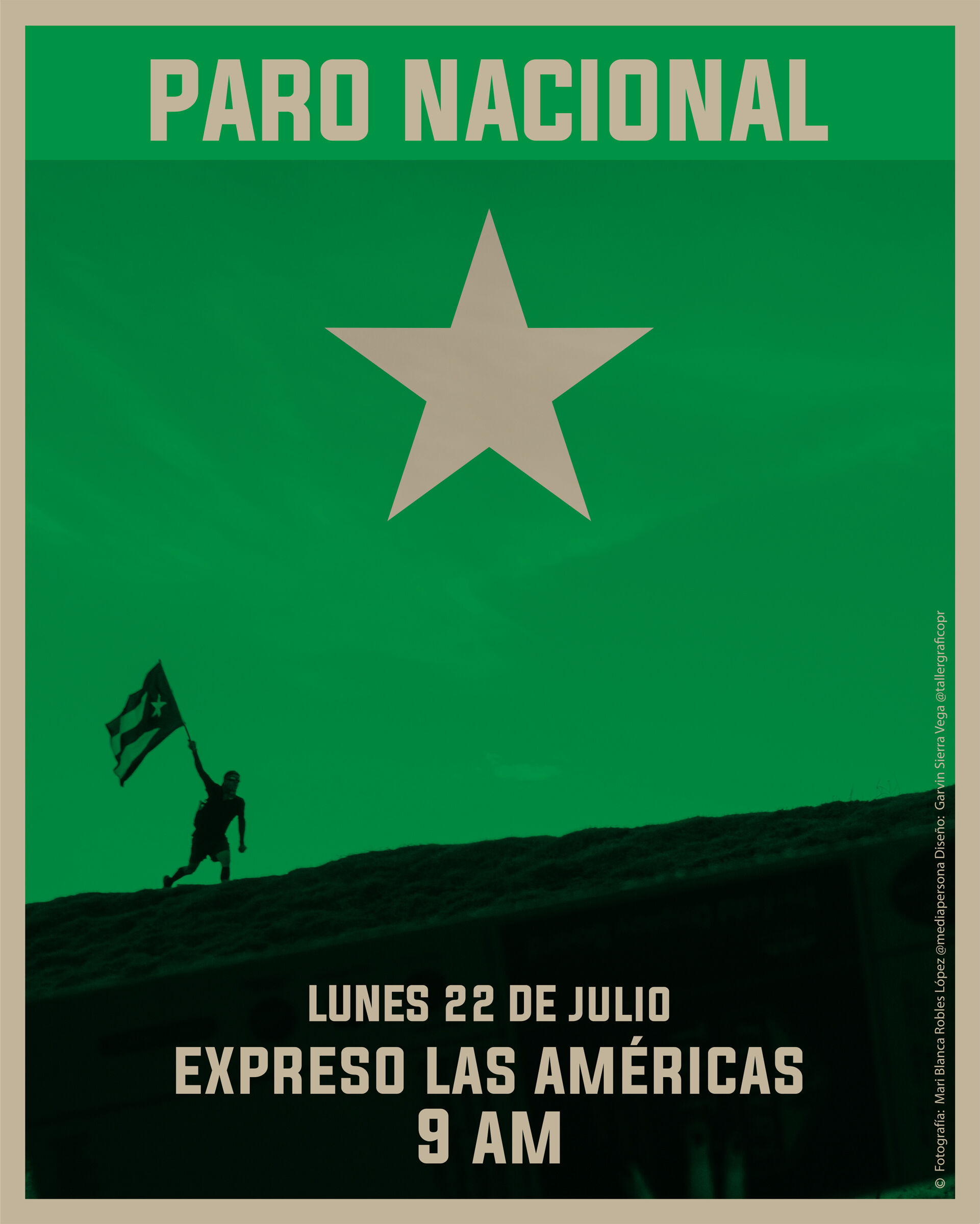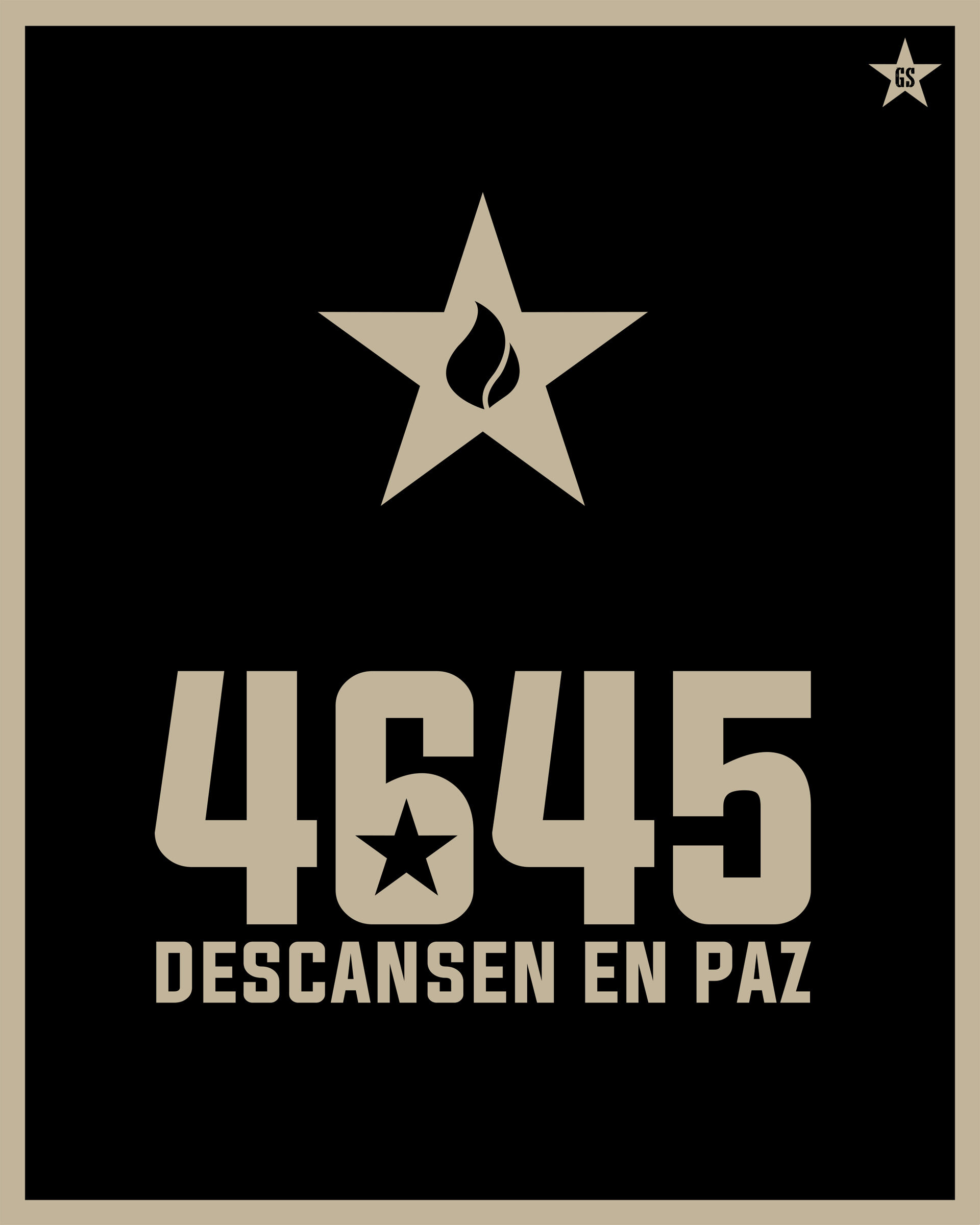Resistance and Protest
How could you raise your voice through art?
The people of Puerto Rico have a long, rich history of activism against the archipelago’s ongoing status as a colonial territory. In the summer of 2019, or “Verano del 19”, the indignation of Puerto Ricans against the then-governor Ricardo (Ricky) Rosselló, and the inept government response to Hurricane Maria and its aftermath, led to continuous protesting, acts of creative resistance, and the viral hashtag #RickyRenuncia, or #RickyResign. On July 24, Roselló resigned, signaling the people’s ability to make change.
Activity
Have students watch Episode 3: Resistance. Ask them to compare the different ways the featured artists protest through their words, actions, and works of art. Have them reflect on artist Sofia Gallisá Muriente’s comment, “For me, natural disasters do not exist. They are human disasters and political disasters, at the end of the day.” Encourage students to discuss the possible roles artists might choose to take on when responding to disasters and current events. Ask them to research a pivotal moment, current or historic, they deem important to communicate to others and sensitively devise a creative means to do so.
Miguel Luciano
Pronouns: he/him
"This work is very much inspired by activist groups that were out there in the streets, putting their freedoms and their bodies at risk to protect Puerto Rico's future." —Miguel Luciano
Miguel Luciano is a multimedia visual artist whose work explores history, popular culture, and social justice through sculpture, painting, and socially engaged projects. Born in San Juan in 1972, he lives and works in New York City. Shields / Escudos was made in response to the widespread protests and massive school closures due to Puerto Rico’s ongoing debt crisis. In 2016, the U.S. Congress passed the Puerto Rico Oversight, Management, and Economic Stability Act (PROMESA or, ironically in Spanish, “promise”), which has since imposed dire austerity measures, including the closings of hundreds of schools. To date, more than 673 public schools, or 44%, have closed in Puerto Rico since 2007.
Luciano’s sculptures are constructed from sheet metal from abandoned school buses in Puerto Rico, to which he added handles and the black-and-white Puerto Rican flag, a widely used symbol of anticolonial resistance. The artist explains, the shields are “designed to protect theprotestors that have been out there trying to defend the future of education for young people on the island.”
Activities
How would you draw attention to the changing life of a community?
Luciano’s keen awareness of the economic and political realities in Puerto Rico led him to reimagine the potential of discarded buses. Ask students to carefully observe the conditions and changes, subtle and not so subtle, of their blocks or neighborhoods. Have them take an observational walk, individually or as a group, to draw or photograph the many visual clues they notice that demonstrate the larger social issues that challenge their communities. Invite them to discuss their findings and select key images that most strongly and succinctly communicate their new understandings. Create a virtual or physical platform to display their artworks.
How could you make space for multiple identities?
Luciano, who was born in Puerto Rico and grew up in New York, explains that his work is about “the relationship historically and politically between these two places that inform who I am." Have students discuss the many complex aspects of their identities. Ask them to imagine they are journalists and break into pairs for interviews. Challenge them to develop probing questions that would offer deeper insights into their subjects. Invite them to write profiles about each other, detailing the main influences on their peer’s sense of self. Have them collaborate on headlines that best introduce each other.
How would you redesign an object for a new purpose?
With Shields / Escudos, Luciano transforms one object into another, creating protective armor for protestors from decommissioned school bus parts and recycled wood. Have students examine the functionality of an object or two from their surroundings and consider how they could alter them for another use. When developing their design modifications, encourage them to take into account accessibility and adaptability for diverse uses and users. Ask students to devise schematics, draw up blueprints, and, if possible, create their new objects. As a bonus, invite them to develop marketing campaigns to advertise their creations.
How could you protest through celebration?
The 2019 protests that prompted the ousting of then-Governor Rosselló included a wide range of creative, joyful expressions—often led by youth—such as dance-offs, acrobatics, and drumming circles, among others. Artists such as Bad Bunny, Residente, and iLe attended and energized these actions with performances. Invite students to conduct internet research on the photos and videos taken during the Verano del 19 protests. Discuss with them how they could respond to selected current events issues through creative means. Their actions could take the form of songwriting, spoken word, poetry, choreography, etc. Have students share their performances with others.
Garvin Sierra Vega
Pronouns: he/him
“I have to inform and communicate.” —Garvin Sierra Vega
Born in 1977 in Ponce, Puerto Rico, Garvin Sierra Vega received his BFA from the Universidad de Puerto Rico. He works as an artist and graphic designer. Building on the Puerto Rican graphic design tradition of the 1950s, he publishes posters on his Instagram account @tallergraficoPR that can be printed for use in protests. The posters examine issues relating to social and political injustices, often making visible what the government and educational systems do not address. In one of them, he solemnly presents the number 4,645, simultaneously honoring the thousands of people who lost their lives due to Hurricane Maria and critiquing the gross undercounting by the government, who claimed that only sixty-four Puerto Ricans had died.
Sierra Vega describes his work as confronting “processes or situations we Puerto Ricans are subjected to daily, in a situation that is also colonial.” He explains, “The government hid, suppressed, and did not talk about the realities,” and the posters “are meant to be a kind of communication or visual record of our situation.”
Activities
How do you resist injustices effectively?
Sierra Vega employs his social media and art to amplify beliefs and creatively incite change. Remind students about their discussions in response to the exhibition video Episode 3: Resistance. Engage students in a conversation about how they respond to social and political injustices. Encourage them to debate or write about the differences between constructive ways of protesting as opposed to disingenuous ones like “virtue signaling” and “slacktivism.” Ask students to brainstorm worthwhile methods they could make change. Motivate them to productively act upon their convictions.
How could you share unknown geographies?
Garvin Sierra Vega frequently uses the map of Puerto Rico to draw attention to diverse realities that exist on the archipelago. Have students discuss how they use maps. Then ask them to investigate the different ways the artist employs the map of Puerto Rico. Invite students to choose a map of their town, city, state, or country, and to think about how they could transform it to communicate another understanding of this place. Encourage them to carefully consider what they would alter or add to their maps to present new or untold stories or histories of their selected place.
How would you modify existing symbols to create alternate meanings? Sierra Vega, who works in graphic design in addition to his other artistic pursuits, often utilizes common symbols, such as flags and stars, as a means of direct visual communication. Discuss with students the symbols they know from literature, history, or their everyday lives and their possible meanings. Have students select a symbol or two to create a new idea. Ask them to think about what they would need to change, invert, or juxtapose to establish different concepts and expand upon the symbol’s original message. Have students present their symbols in the medium of their choosing (for example, collage or digital format).
How could you graphically disseminate a message?
The digital posters Garvin Sierra Vega designs for his social media present searing critiques of complex social and political issues through succinct graphic means. Encourage students to think of an issue that is important to them or a reality that is not adequately addressed. Ask them to create a concept map that includes words and images they associate with their topic. Have them compose a concise message that conveys their point of view. Next, challenge them to design simple graphics using bold, eye-catching colors to accompany their text. Display the posters at school and/or on social media. Invite students to devise varied means to receive responses from their peers.
Additional Resources
New York Times: Photo-essay covering school closures in Puerto Rico.
All Arts: Video about The Young Lords History and Influence on Miguel Luciano.
Artist Website: Garvin Sierra Vega
A Blade of Grass: Article about mutual aid and solidarity projects made in the aftermath of Hurricane Maria.

